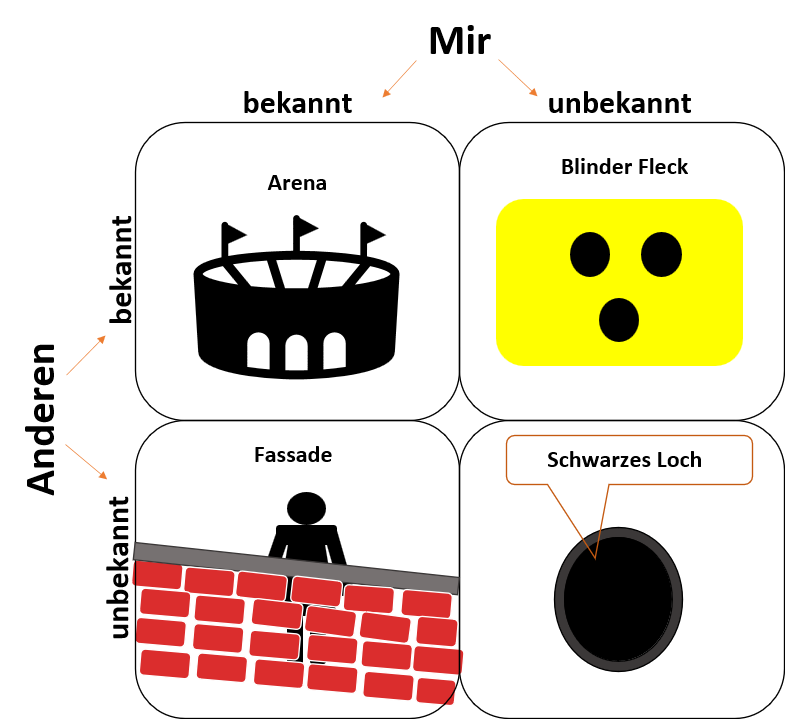Johari Window
With the help of the Johari Window, the willingness to accept feedback can be significantly increased

The Johari Window model was developed in the 1950s by two American social psychologists named Joseph Luft and Harry Ingham. The name "Johari" is made up of parts of the two first names of the social psychologists.
There are different perspectives when dealing with each other. Often what we know and think about ourselves is not what others think about us. By using the Johari method, one can visualize one's self-perception and that of others. The use of the Johari window can be very helpful, especially in group work. One develops an understanding of the behavior of others towards oneself when one understands how one comes across to others. This understanding makes group work and dealing with each other easier.

Me
The person concerned, e.g. feedback recipient
Others
The group, the feedback provider, the public in the current context.
Arena
This part of the window contains everything that both the person concerned and the others know about the person concerned (intersection of self-image and external image).
Example: Fred says to his girlfriend Ina: "I like to eat vegetarian." This is known to both Fred and Ina.
Facade
Behind this part of the window is everything that is known to the person concerned (me), which the person concerned does not reveal to the outside (others) consciously or unconsciously (arena + facade = self-image). Revelation (e.g. justification in the case of unacceptable feedback) reduces the facade.
Example: Fred really likes to eat fish, but doesn't want to reveal this to his vegetarian friend Ina.
Blind Spot
The blind spot encompasses everything that others perceive about the person concerned but is unknown to the person concerned (arena + blind spot = image of others). The moment the blind spot is reduced, a learning process begins.
Example: Ina becomes very aggressive when she is under stress. Fred knows this, Ina is not aware of this quality in her.
Black Hole
The black hole includes everything that is not known to me or to the others. For example, unconscious thought patterns, beliefs fall into this part of the Johari window.
Example: Ina is very manipulative. But neither she nor her boyfriend Fred is aware of this.
The Johari Window In The Training Context
In training, the willingness to accept feedback can be established by using the Johari window by illustrating the so-called "blind spot" in a person's self-image. This model is also suitable for anticipating objections .
The goal is to enlarge the arena. Either feedback is accepted (reduction of the blind spot, expansion of the arena) or one reveals itself (reduction of the facade, expansion of the arena).
The closer the self-image and the image of others are, the easier and more effective it is to deal with each other and to work in groups.